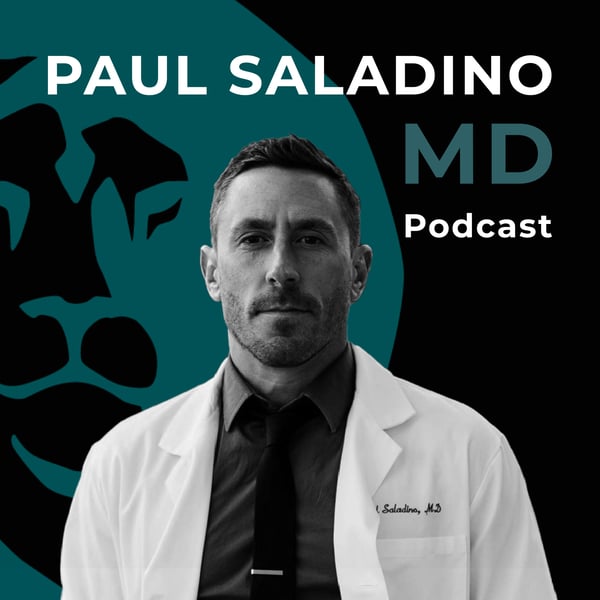Controversial Thoughts: What I think about mushrooms, olive oil, and avocado oil
Paul Saladino MD podcast
Paul Saladino, MD
4.8 • 2.7K Ratings
🗓️ 16 July 2021
⏱️ 15 minutes
🧾️ Download transcript
Summary
Both plants and fungi are stuck in the ground and can't move and both have developed defense chemicals to protect themselves from predation.
99.5% of animals are edible
Only 20-30% of plants are edible
And only 20-30% of mushrooms are edible
Listen to the video for more detailed information here but this is the take-away: mushrooms are survival food and I'm not convinced they have unique benefits we can't get from meat, organs, or other less toxic plant foods.
Olive oil: tallow is better and most is rancid/tainted
Same is true for Avocado oil. Tallow is better and contains uniquely valuable nutrients like stearic acid, fat soluble vitamins, and odd chain fatty acids.
Email us at [email protected] if you have any questions about how to eat an #animalbased diet!
#theremembering
Transcript
Click on a timestamp to play from that location
| 0:00.0 | What is up you guys? Welcome to another edition of Controversial Thoughts. On today's episode, |
| 0:05.4 | I wanted to answer some of the most common questions I get about animal-based diets in the way I |
| 0:10.5 | think about which foods are more toxic and less toxic and which oils are preferred. Specifically, |
| 0:15.7 | the common questions I get here are what about mushrooms, what about olive oil, what about |
| 0:20.8 | coconut oil, and what about avocado oil. So let's start with mushrooms. When we are thinking about |
| 0:26.6 | mushrooms and plants, so fungus and plants, and animals, we have to think about the position |
| 0:32.1 | in that these organisms, these life forms occupy within an ecosystem. Animals can run away from you. |
| 0:37.6 | They have built-in defense mechanisms, teeth, horns, hooves, legs to move around. Plants don't have this. |
| 0:44.7 | So evolutionarily, plants develop spines, hard shells, thorns, but also defense chemicals. |
| 0:50.9 | Fungye are also generally sessile, generally stuck in the ground. Some fungus move a little bit. |
| 0:58.8 | There's like slime molds that move a little bit, but generally fungi are stuck in the ground. |
| 1:03.6 | Mushrooms are stuck in the ground generally, or they're growing on trees. Different types of fungi. |
| 1:09.2 | So just like plants, fungi have had to develop defense mechanisms because they are an organism |
| 1:15.5 | that is in the ground, or on trees. They are generally non-motile. So some fungi encase their |
| 1:22.2 | whole body in very hard shells. You've ever seen a rachy mushroom. It's like almost like wood. |
| 1:27.8 | It has a very, very hard shell. It's not very easy for an animal to go and bite it, although some might. |
| 1:34.4 | In the cell wall of fungi, it's called kitan, which is a pretty difficult to digest substance that |
| 1:40.0 | protects fungi, but we can denature it by boiling them. But a lot of times, if you eat a mushroom, |
| 1:45.1 | it has kitan in the cell wall, which most fungi do. They're not going to digest much of it, |
| 1:50.0 | because that cell wall is very good defense mechanism. And if you know anything about my |
| 1:54.8 | ecology or the kingdom of fungi, you'll know there are many, many, very, very poisonous mushrooms. |
| 2:04.0 | I've often said, I think this is something I got from Steve Rinella when I was in Montana |
... |
Please login to see the full transcript.
Disclaimer: The podcast and artwork embedded on this page are from Paul Saladino, MD, and are the property of its owner and not affiliated with or endorsed by Tapesearch.
Generated transcripts are the property of Paul Saladino, MD and are distributed freely under the Fair Use doctrine. Transcripts generated by Tapesearch are not guaranteed to be accurate.
Copyright © Tapesearch 2025.

